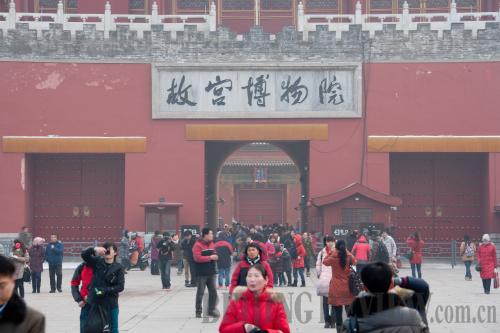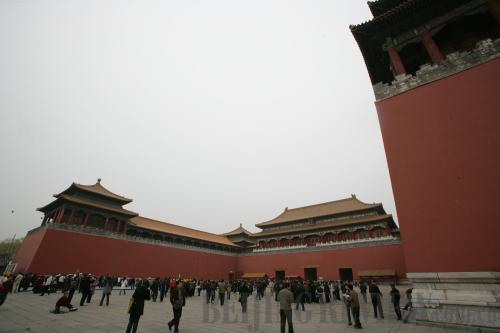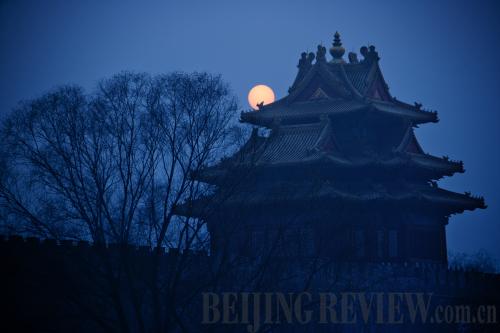|
 |
|
The Palace Museum |
The Palace Museum
Established in 1925, the Palace Museum is located inside the Forbidden City from where Ming (1368-1644) and Qing (1644-1911) dynasty emperors administered China.
Situated in the heart of Beijing, the Palace Museum is approached through Tian'anmen Square. The royal dwelling derived its name from its heavily restricted access. It was built from 1406 to 1420 by Yongle Emperor (1403-20) who, upon usurping the throne, moved his capital northward from Nanjing to Beijing. During nearly 600 years, 24 emperors lived in and ruled from the palace.
Surrounded by 10-meter-high walls and a 52-meter-wide moat, the museum covers an area of 720,000 square meters, offering visitors the chance to experience traditional palace architecture, enjoy treasures kept inside, and learn of legends and anecdotes about the imperial family.
Once inside, tourists are greeted by a succession of halls and palaces spreading out on either side of an invisible central axis. The buildings' glowing yellow roofs levitating above vermilion walls are a magnificent sight while the painted ridges and carved beams all contribute to a sumptuous effect.
Representing 5,000 years of Chinese civilization, alongside the 600-year history of the Forbidden City itself, the museum is committed to the preservation of the national patrimony and becoming a world-class facility.
Although previously allocated inside forbidden precincts, the Palace Museum has become increasingly accessible by means of digital technology.
Its official website, established in 2001, is dedicated to spreading the cultural message of the Forbidden City worldwide.
The Palace Museum mainly draws from the Qing imperial collection. Magnificent architecture and vast holdings of imperial paintings, calligraphy, ceramics, and decorative objects make the museum one of the most prestigious in China and the world. Together with Tian'anmen Square, the Great Wall and the Summer Palace, it is a must-visit tourist attraction in Beijing.
As one of the most famous national heritages in the capital, it attracts numerous visitors from around the world every year. The museum set a record when it received 182,000 tourists on October 2, 2012.


Email us at: baishi@bjreview.com | 